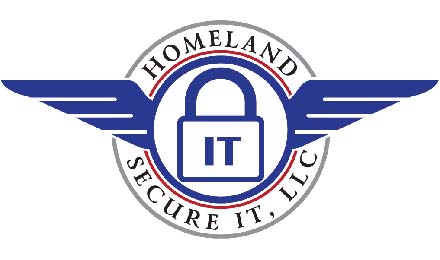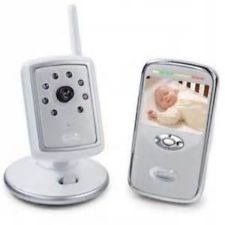The number one complaint we have heard from purchasers of new machines that come with Microsoft Windows 8 is that the desktop experience is not what they expect. Especially if they do not have a touchscreen.
Typical mouse and keyboard users flip back and forth between the desktop.
Have no fear, Microsoft has had mercy on your soul and the upcoming update will address that issue and many others! Booting directly to the desktop, however, will be the one feature that causes most people to immediately update, and will likely boost new computer sales in our opinion.
Here’s the whole long list of upcoming Windows 8.1 changes as it looks currently:
What’s New in Windows 8.1
We built Windows 8 to bring a modern computing experience to businesses and to help professionals stay connected to their colleagues and clients from anywhere, anytime. Windows 8.1 advances this vision and introduces new manageability, mobility, security, user experience and networking capabilities that will be available later this year – with the goal of offering customers the best business tablets and versatile modern business PCs driven by the most powerful operating system designed for today’s modern businesses.
Below is a list of some of the new and updated features that we invite to you test out when the Windows 8.1 experience becomes available later this month.
Bring Your Own Device (BYOD) Enhancements
Workplace Join
A Windows 8 PC was either domain joined or not. If it was a member of the domain, the user could access corporate resources (if permissioned) and IT could control the PC through group policy and other mechanisms. This feature allows a middle ground between all or nothing access, allowing a user to work on the device of their choice and still have access to corporate resources With Workplace Join, IT administrators now have the ability to offer finer-grained control to corporate resources. If a user registers their device, IT can grant some access while still enforcing some governance parameters on the device.
Work Folders
Work Folders allows a user to sync data to their device from their user folder located in the corporation’s data center. Files created locally will sync back to the file server in the corporate environment. This syncing is natively integrated into the file system. Note, this all happens outside the firewall client sync support. Previously, Windows 8 devices needed to be domain joined (or required domain credentials) for access to file shares. Syncing could be done with third-party folder replication apps. With Work Folders, Users can keep local copies of their work files on their devices, with automatic synchronization to your data center, and for access from other devices. IT can enforce Dynamic Access Control policies on the Work Folder Sync Share (including automated Rights Management) and require Workplace Join to be in place.
Open MDM
While many organizations have investments with System Center and will continue to leverage these investments we also know that many organizations want to manage certain classes of devices, like tablets and BYOD devices, as mobile devices. With Windows 8.1, you can use an OMA-DM API agent to allow management of Windows 8.1 devices with mobile device management products, like Mobile Iron or Air Watch.
Mobile Device Management
When a user enrolls their device, they are joining the device to the Windows Intune management service. They get access to the Company Portal which provides a consistent experience for access to their applications, data and to manage their own devices. This allows a deeper management experience with existing tools like Windows Intune. IT administrators now have deeper policy management for Windows RT devices, and can manage Windows 8.1 PCs as mobile devices without having deploy a full management client.
Web Application Proxy
The Web Application Proxy is a new role service in the Windows Server Remote Access role. It provides the ability to publish access to corporate resources, and enforce multi-factor authentication as well as apply conditional access policies to verify both the user’s identity and the device they are using resources, and enforce multi-factor authentication as well as verify the device being used before access is granted.
RDS Enhancements
Enhanced Virtual Desktop Infrastructure (VDI) in Windows Server 2012 R2 with improvements in management, value, and user experience. Session Shadowing allows administrators to view and remotely control active user sessions in an RDSH server. Disk dedupe and storage tiering allow for lower cost storage options. User experience for RemoteApps, network connectivity and multiple displays has been improved. Administrators can now easily support users with session desktops to provide helpdesk style support. Administrators now have even more flexible storage options to support a VDI environment without expensive SAN investments. End users will find RemoteApp behavior is more like local apps, and the experience in low-bandwidth is better, with faster reconnects and improved compression, and support for multiple monitors.
NFC Tap-to-pair Printing
Tap your Windows 8.1 device against an enterprise NFC-enabled printer and you’re all set to print. No more hunting on your network for the correct printer and no need to buy a special printer to take advantage of this functionality. Simply attach an NFC tag to your existing printers to enable this functionality.
Wi-Fi Direct Printing
Connect to Wi-Fi Direct printers without adding additional drivers or software on your Windows 8.1 device, forming a peer-to-peer network between your device and the printer.
Native Miracast Wireless Display
Present your work wirelessly with no connection cords needed; just pair with a Miracast-enabled projector via NFC and Miracast will use Wi-Fi to let you project wire-free.
Mobility Enhancements
VPN
We have added support for a wider range of VPN clients in both Windows and Windows RT devices. We have also added the ability to have an app automatically trigger VPN connections.
Mobile Broadband
At Windows 8 launch, the devices had embedded radios that were separate components within the devices. Windows 8.1 supports embedded wireless radio, which gives you increased power savings, longer battery life, also enables thinner form factors and lower cost devices.
Windows To Go
With Windows To Go in Windows 8.1, the Windows Store is enabled by default. Windows To Go users may roam to any number of machines and access the Windows Store and use Windows Store apps.
Broadband Tethering
Turn your Windows 8.1 mobile broadband-enabled PC or tablet into a personal Wi-Fi hotspot, allowing other devices to connect and access the internet.
Auto-triggered VPN
When you select an app or resource that needs access through the inbox VPN – like a company’s intranet site – Windows 8.1 will automatically prompt you to sign in with one click. This feature will be available with Microsoft and third-party inbox VPN clients.
Security Enhancements
Remote Business Data Removal
Corporations now have more control over corporate content which can be marked as corporate, encrypted, and then be wiped when the relationship between the corporation and user has ended. Corporate data can now be identified as corporate vs. user, encrypted, and wiped on command using EAS or EAS + OMA-DM protocol. This capability is requires implementation in the client application and in the server application (Mail + Exchange Server). The client application determines if the wipe simply makes the data inaccessible or actually deletes it.
Improved Biometrics
All SKUs will include end to end biometric capabilities that enable authenticating with your biometric identity anywhere in Windows (Windows sign-in, remote access, User Account Control, etc.). Windows 8.1 will also be optimized for fingerprint based biometrics and will include a common fingerprint enrollment experience that will work with a variety of readers (touch, swipe). Modern readers are touch based rather than swipe and include liveliness detection that prevents spoofing (e.g.: silicon emulated fingerprints). Access to Windows Store Apps, functions within them, and certificate release can be gated based on verification of a user’s biometric identity.
Pervasive Device Encryption
Device encryption previously found on Windows RT and Windows Phone 8 is now available in all editions of Windows. It is enabled out of the box and can be configured with additional BitLocker protection and management capability on the Pro and Enterprise SKUs. Consumer devices are automatically encrypted and protected when using a Microsoft account. Data on any Windows connected standby device is automatically protected (encrypted) with device encryption. Organizations that need to manage encryption can easily take add additional BitLocker protection options and manageability to these devices.
Improved Internet Explorer
Internet Explorer 11 improvements include faster page load times, side-by-side browsing of your sites, enhanced pinned site notifications, and app settings like favorites, tabs and settings sync across all your Windows 8.1 PCs. Internet Explorer 11 now includes capability that enables an antimalware solution to scan the input for a binary extension before it’s passed onto the extension for execution
Malware Resistance
Windows Defender, Microsoft’s free antivirus solution in Windows 8, will include network behavior monitoring to help detect and stop the execution of known and unknown malware. Internet Explorer will scan binary extensions (e.g. ActiveX) using the antimalware solution before potentially harmful code is executed.
Device Lockdown
With Assigned Access, a new feature offered in Windows 8.1 RT, Windows 8.1 Pro, and Windows 8.1 Enterprise, you can enable a single Windows Store application experience on the device. This can be things like a learning application for kids in an educational setting or a customer service application at a boutique, Assigned Access can ensure the device is delivering the intended experience. In our Windows Embedded 8.1 industry product, we deliver additional lockdown capabilities to meet the needs of industry devices like point of sale systems, ATMs, and digital signs.
Modern UI experience
Variable, Continuous Size of Snap Views
You have more ways to see multiple apps on the screen at once. You can resize apps to nearly infinite sized windows, share the screen between two apps, or have up to three apps on each monitor.
Boot to Desktop
We have made configuration options available which will allow you to boot directly to the desktop in Windows 8.1.
Desktop and Start Screen
Improvements have been made to better support users who prefer a mouse and keyboard experience to access applications.
These are just some of the key features available in Windows 8.1 We encourage you to test out and try these features when you evaluate Windows 8.1 for use both in your work environment as well as at home in your personal life. Please note that Windows Server 2012 R2 may be required in order for some of these features to be available.


